#micropipette types
Explore tagged Tumblr posts
Text
A micropipette is a precision instrument used in laboratories for accurately measuring and transferring small volumes of liquid. It's essential for tasks that demand high accuracy and reproducibility.
At Microlit, we offer a comprehensive Micropipette Product Guide to help you select the best micropipette for your needs. Our guide covers everything from single-channel to multi-channel micropipettes, highlighting their unique features and benefits. With our advanced technology and ergonomic designs, Microlit micropipettes ensure reliable performance and ease of use, making your lab work more efficient and precise.
Whether you're conducting intricate experiments or routine procedures, having the right micropipette can significantly impact your results. Explore our Micropipette Product Guide today and discover the perfect tool for your liquid handling requirements.
1 note
·
View note
Text
The Impact of Temperature on Pipetting Accuracy
Pipetting is an essential laboratory process, and depends heavily on precision instruments like micropipettes. Whether you're using an automatic micropipette for high-throughput experiments or a manual micropipette for delicate tasks, maintaining accuracy is essential. However, one often-overlooked factor that can significantly influence pipetting accuracy is temperature.
Let’s explore how temperature affects pipetting accuracy and how you can mitigate these challenges for reliable results.
How Does Temperature Affect Pipetting Accuracy?
Thermal Expansion of Liquids and Instruments Temperature fluctuations directly impact liquid density and volume. For instance, warmer liquids expand, which can lead to inaccurate volume measurements. This is particularly important when working with nanoliter dispensing or small volumes where even minor variations can cause significant errors. The mechanics of micropipettes, including pipette calibration standards, are also influenced by temperature. Plastic components in an auto micropipette or graduated micropipette may expand or contract, affecting their calibration.
Vapor Pressure Changes High temperatures can increase the vapor pressure of volatile liquids, making precise liquid handling more challenging. In such cases, using specialized micropipette tips designed for volatile substances can help.
Operator-Related Factors Human body heat can subtly affect the pipette price you pay in terms of accuracy. For example, holding the micropipette for extended periods might warm it up, leading to slight deviations in the dispensed volume. Understanding this interaction can help you choose the right types of micropipette for your tasks.
Best Practices for Mitigating Temperature Effects
Use Temperature-Adapted Tools Modern micropipette technology includes tools designed to minimize temperature effects. Investing in an automated micropipette or a well-calibrated micropipette pipette ensures consistent performance.
Pre-Equilibrate the Pipette and Liquid Allow both your automatic micropipette and the liquid to equilibrate to room temperature before beginning your work. This reduces discrepancies caused by temperature differences.
Calibrate Regularly Regular pipette calibration ensures your instrument remains accurate despite environmental changes. Calibration services often account for temperature variations when setting pipette calibration standards.
Choose the Right Tools Selecting the right pipette, whether it’s a micropipette pipette, an auto micropipette, or a graduated micropipette, for your specific application is crucial. For high-precision tasks, consider a pipette with nanoliter dispensing capabilities.
Monitor Environmental Conditions Maintain a stable lab environment to minimize temperature fluctuations. Using precision instruments in a controlled setting ensures more consistent results.
Why It Matters
Accurate pipetting is essential in fields like molecular biology, drug development, and clinical diagnostics. Inaccuracies, even if minor, can lead to failed experiments, increased costs, and unreliable results. By accounting for temperature effects and investing in reliable tools like automatic micropipettes or glass micropipettes, you ensure better reproducibility and efficiency.
Final Thoughts
Temperature plays a subtle but significant role in pipetting accuracy. Understanding its impact can help you make informed decisions, whether you're choosing a new micropipette pipette, comparing micropipette cost, or learning about the mechanics of micropipettes. Regular calibration, proper usage, and investing in advanced micropipette technology can mitigate temperature-related challenges, enabling accurate and reliable liquid handling every time.
Whether you're handling nanoliters or milliliters, accuracy is non-negotiable. Choose the right pipettor at the right pipettor price, calibrate regularly, and always consider environmental factors like temperature to achieve the best results in your work.
#liquid handling#pipettes#micropipette#bottle top dispensers#micropipette pipette#types of micropipette#pipette calibration standards
0 notes
Text
Aluminium TLC Plates Explained: What Makes Them So Popular in Labs?
In every chemistry or pharmaceutical lab, precision and consistency are key. Whether you're identifying compounds, checking purity, or monitoring reactions, one simple yet powerful tool often plays a crucial role — the TLC plate. Among the various types available, the aluminium TLC plate has become a favorite for many scientists and lab technicians.
But what exactly are thin layer chromatography plates, and why are aluminium-backed ones so widely used? Let’s take a closer look at their structure, function, and growing popularity in laboratories across industries.
What Are TLC Plates?
TLC, or Thin Layer Chromatography, is a simple and quick analytical technique used to separate and identify compounds in a mixture. The process involves applying a small sample onto a coated plate and allowing a solvent to carry the components up the surface by capillary action. As each compound travels at a different speed, it creates a unique pattern, helping chemists identify what's in their sample.
The plate used for this process is known as a TLC plate. It’s typically coated with a stationary phase, such as silica gel or alumina, and backed with a support material — like glass, plastic, or aluminium.
Why Aluminium TLC Plates Stand Out
Among the three common backing types, aluminium TLC plates have become the preferred choice in many labs. Here’s why:
1. Flexibility and Durability
Unlike glass plates that are prone to breaking, aluminium-backed TLC plates are lightweight and flexible, making them easier to handle, cut, and store. They’re especially useful in high-throughput labs where time and safety matter.
2. Consistent Performance
Aluminium provides a smooth and uniform surface, which supports even coating of the stationary phase. This leads to more accurate and reproducible results — a big plus when precision is non-negotiable.
3. Quick Separation and Visualization
When used with common solvents and detection methods, aluminium TLC plates offer rapid separation of compounds. Whether you're working with organics, plant extracts, or pharmaceuticals, they allow for clear visualization and reliable interpretation of results.
Popular Applications in the Lab
Thin layer chromatography plates are used in a wide variety of applications, including:
Monitoring reaction progress in synthetic chemistry
Testing compound purity in quality control labs
Identifying plant metabolites in natural product research
Screening for drugs in forensic and pharmaceutical settings
Their ease of use and fast turnaround make them ideal for both educational purposes and professional lab work.
TLC Plate Merck: A Trusted Standard
When you hear the term TLC plate Merck, it typically refers to high-quality thin layer chromatography plates manufactured by Merck — a globally recognized name in lab reagents and equipment. Merck TLC plates are known for their precision coatings, excellent consistency, and wide variety of options tailored to different analysis needs.
From standard silica gel plates to specialty formats for advanced separations, Merck offers TLC solutions that support everything from routine lab testing to complex research workflows.
How to Use Aluminium TLC Plates Effectively
Using aluminium TLC plates is relatively straightforward, but a few best practices can help you get optimal results:
Handle with care to avoid damaging the coated surface
Use proper sample spotting tools like capillaries or micropipettes
Ensure consistent solvent saturation in the chamber
Mark the origin line lightly with a pencil to avoid interfering with the sample
Cut to size if needed — aluminium plates can easily be trimmed to fit your setup
After development, the plate can be dried and observed under UV light or sprayed with visualization reagents to reveal separated spots.
Final Thoughts
In the fast-paced environment of chemical and pharmaceutical labs, tools that offer speed, accuracy, and convenience are invaluable. The aluminium TLC plate checks all these boxes, which is why it continues to be a go-to choice for thin layer chromatography.
Whether you're analyzing a complex compound or performing a routine quality control check, TLC remains a dependable technique — and aluminium-backed plates make it even better.
For those looking for quality-assured TLC solutions, including TLC plate Merck and other chromatography essentials, Lab Chemicals provides a wide range of trusted products tailored to your laboratory needs.
0 notes
Text
IVF vs. ICSI: Understanding the Differences in Fertility Treatments
If you're thinking about ways to have a baby, you might have heard about IVF (In Vitro Fertilization) and ICSI (Intracytoplasmic Sperm Injection). Both are ways to help people have children. But what makes them different? This blog post will explain what ICSI is, how it works, and how it's different from IVF.
What is ICSI?
ICSI stands for Intracytoplasmic Sperm Injection. It is a treatment for infertility. In ICSI, a doctor injects a single sperm directly into an egg in a lab. This helps to create an embryo, which is a fertilized egg. ICSI is a type of IVF. Doctors often use ICSI when a man has problems with his sperm that make it hard to get someone pregnant.
How Does ICSI Work?
With IVF, there are two main ways to fertilize an egg:
Traditional IVF
ICSI
In traditional IVF, many sperm (50,000 or more) are placed next to an egg in a dish. Then, one of the sperm enters the egg on its own to fertilize it.
In ICSI, a tiny needle, called a micropipette, is used to inject a single sperm right into the center of the egg.
With both IVF and ICSI, once an egg is fertilized, it becomes an embryo. The embryo grows in a lab for 1 to 5 days before being placed in the woman's uterus (womb).
ICSI vs. IVF: What's the Difference?
ICSI is a type of IVF. In traditional IVF, a doctor puts thousands of sperm next to an egg in a lab dish. Then they wait and hope that one of the sperm will enter the egg and fertilize it. If no sperm enters the egg, the egg will not be fertilized.
ICSI helps fertilization by injecting one sperm directly into the egg. But, ICSI does not guarantee that the egg will be fertilized.
Dr. Hima Deepthi V, a fertility specialist, explains that ICSI is an advanced technique for forming embryos. ICSI can have a success rate of 40 to 45 percent, compared to IVF's lower rate of 20 to 25 percent.
Considering Fertility Treatment?
ICSI and IVF are ways to help people have children when they are having trouble getting pregnant. ICSI is often used when there are male fertility problems. Talk to a fertility specialist to learn more. They can help you decide which treatment is best for you.
0 notes
Text
Micropipette Accuracy vs. Precision: What’s the Difference? | Accumax

It is essential to achieve dependable and reproducible outcomes while working in a laboratory. The two main focal points that concern the performance of micropipettes are accuracy and precision. Even though these terms are used as synonyms quite often, there is a difference particularly with respect to liquid handling devices such as micropipettes.
We develop and manufacture micropipettes with the best accuracy and precision. In this blog we will discuss how Accumax micropipettes achieve accuracy and precision in the laboratory.
Accuracy vs. Precision: The Discrepancies
Accuracy: Accuracy describes how close a measured value is to a benchmark. E.g,. For Pipettes, this means delivering the exact volume of liquid specified. A precise pipette will dispense 100 µL if set to dispense 100 µL. An accurate pipette will dispense 100 µL (or very close to it) while adjusted to 100 µL
Precision: Precision is better described as the repeated consistency of measurements. A precise pipette will dispense a certain quantity repetitively. That certain amount of liquid may not be the target amount, but a precise micropipette will always dispense that amount consistently.
Example Scenario
High Accuracy, Low Precision: The pipette delivers volumes close to the target (e.g., 99 µL, 101 µL, 100 µL) but with variation.
High Precision, Low Accuracy: The pipette consistently delivers the same volume (e.g., 95 µL every time) but is far from the target.
High Accuracy & High Precision: The pipette consistently delivers the exact target volume (e.g., 100 µL every time).
You need both Accuracy and Precision to arrive at reliable lab results.
How Accumax Ensures Accuracy and Precision at the Same Time
Our Micropipettes are built to provide optimal performance. This is how we achieve optimums:
Superior Calibration & Quality Control: We calibrate our Micropipettes through rigorous processes to ensure that they comply with international requirements (ISO 8655) and they are tested for accuracy and precision before they leave the factory.
Ergonomic & Consistent Design Accumax Micropipettes offer:
One of the lowest plunge force action to improve liquid handling
The magnet-assisted piston mechanism ensures a distinct separation between the first and second stop without relying on a heavier spring.
It requires lower insertion and injection forces for tips to attach and detach.
Lightweight, Autoclavable and fits universal tips: With Accumax Micropippettes unlike standard type, there is increased repeatability and decreased variation which provides reliable results in important tasks such as PCR, ELISA, and cell culture.
Why Accumax Micropipettes?
Built for Precision – Ensures accurate and reliable liquid handling.
Lowest Plunge Force – Crafted to ensure smooth and effortless operation.
Magnet Assisted Piston – To deliver unmatched precision and consistency.
Easy Tip Ejection – Shock proof tip ejection with unique shock absorbing mechanism.
Versatile range – You can get single-channel or multi-channel types that handle different amounts.
Accuracy and precision are both essential for reliable pipetting. While accuracy ensures you’re close to the target volume, precision guarantees consistency across multiple uses. Accumax Labs micropipettes are designed to excel in both, making them an excellent choice for laboratories that demand precision, reliability, and efficiency.
Upgrade your lab with Accumax micropipettes and experience the difference in performance!
Also Read: Micropipette Guide: Types, Applications and More
Blog Source -- Micropipette Accuracy vs. Precision: What’s the Difference?
0 notes
Text
New micropipette allows precise ion delivery to individual brain cells
Researchers at Linköping University have developed a new type of pipette that can deliver ions to individual neurons without affecting the sensitive extracellular milieu. Controlling the concentration of different ions can provide important insights into how individual braincells are affected, and how cells work together. The pipette could also be used for treatments. Their study has been…

View On WordPress
0 notes
Text
Let's break down the components you listed for a restriction enzyme digestion and clarify their roles.
1. Buffer: A restriction enzyme buffer is crucial. It provides the optimal pH and ionic strength necessary for the enzyme's activity. The specific buffer composition (e.g., Tris-HCl, NaCl, MgCl2, etc.) varies depending on the restriction enzyme(s) used. Manufacturers provide the correct buffer for their enzymes; using the wrong buffer will likely result in poor or no digestion.
2. CutSmart™ Buffer (NEB): This is a commercial buffer from New England Biolabs (NEB). It's designed to be compatible with a wide range of restriction enzymes, often eliminating the need for multiple buffers when digesting with several enzymes simultaneously. It's a pre-mixed solution containing salts, cofactors, and other components that optimize the activity of many Type II restriction enzymes. It's not an enzyme itself, but rather a reaction condition enhancer.
3. NdeI and XhoI: These are both Type II restriction enzymes. They are the "molecular scissors" that cut the DNA. Each recognizes a specific, short DNA sequence (a palindromic sequence) and cleaves the DNA at or near that site. NdeI and XhoI have different recognition sequences, resulting in different cut sites within the DNA.
NdeI recognition site: 5'-CATATG-3'
XhoI recognition site: 5'-CTCGAG-3'
4. FMQ (Unclear): I'm unfamiliar with "FMQ" in the context of restriction enzyme digestion. It's not a standard reagent or abbreviation. Could you double-check the spelling or provide more information about what FMQ represents? It's possible it's a specific component from a commercial kit, a typo, or an abbreviation not widely used.
How these are used in restriction enzyme digestion:
DNA preparation: You start with the DNA you want to cut (e.g., plasmid DNA).
Setting up the reaction: In a microcentrifuge tube, you combine:
Your DNA
The appropriate restriction enzyme(s) (NdeI and XhoI in this case)
The correct buffer (CutSmart™ buffer or the buffer specified by the manufacturer for your enzymes if not using a universal buffer)
Water (to bring the reaction to the final volume)
Incubation: The tube is incubated at the optimal temperature for the enzymes (usually 37°C, but check the manufacturer's instructions). This allows the enzymes to bind to their recognition sites and cut the DNA.
Analysis: After incubation, you can analyze the digested DNA using techniques like gel electrophoresis to verify that the DNA has been cut at the expected sites.
Important Note: Always consult the manufacturer's instructions for each enzyme and buffer. They provide specific recommendations for optimal reaction conditions (buffer type, enzyme concentration, incubation time and temperature). Using the wrong conditions can lead to incomplete digestion, star activity (cutting at non-specific sites), or enzyme inactivation.
To determine if anything is missing from a restriction enzyme digestion supplies list, I need to see the list itself. However, based on general knowledge, here are some common items that are often overlooked:
Micropipettes and tips: Essential for accurately measuring and transferring small volumes of liquids. Different sizes are needed depending on the volumes of reagents used.
Microcentrifuge tubes: Small tubes (typically 1.5 mL or 0.5 mL) to hold the reaction mixture.
Ice: Restriction enzymes and other components should be kept on ice to maintain their activity and prevent degradation.
Incubator or water bath: To maintain the reaction at the correct temperature (usually 37°C for many restriction enzymes).
DNA ladder (for gel electrophoresis): If the digested DNA is going to be analyzed by gel electrophoresis, a DNA ladder is needed to determine the sizes of the DNA fragments.
Gel electrophoresis equipment: This includes a power supply, gel casting tray, electrophoresis chamber, and staining solution (such as ethidium bromide or a safer alternative) if you are running a gel.
Gloves and appropriate personal protective equipment (PPE): To protect yourself from potential hazards in the lab.
Deionized or distilled water: Used to adjust the final volume of the reaction.
Please provide the supplies list you have, and I can give you a more specific answer. I can then compare it to a typical list of necessary components and point out any potential omissions.
0 notes
Text
10 Types of Laboratory Glassware Every Scientist Should Know

When it comes to research and contributing to science through experimentation, all scientific laboratory glassware is of utmost importance. Whether it is chemistry, biology or any other scientific field, the correct glassware is essential for getting precise results and completing processes efficiently. The leading laboratory glassware manufacturers in India are equipped with different kinds of high-quality Laboratory Glassware to cater to the diverse demands of scientists. In this Blog, we will explore ten essential types of laboratory glassware that every scientist should be familiar with.
10 Essential Laboratory Glassware That Every Scientist Should Know
Flasks
Flasks can be broadly classified into 2 categories; basically, there are Erlenmeyer flasks and volumetric flasks. An Erlenmeyer flask is conical so it has a narrow glass neck so it is good for swirling liquid without spilling it out. Volumetric flasks have very distinctive shaped bodies and are for making accurate measurements of specific volumes most often for preparing dilutions.
Beakers
A beaker is a cylindrical shape with a flat bottom and is usually made from glass or plastic. The beakers are employed in mixing as well as in heating and stirring the liquids. Beakers come in a variety of shapes and sizes promoting the accurate measurement of volumes by the scientist.
Pipettes
Pipettes are very useful devices when accurate measurements of small volumes are necessary. There are various kinds of Pipettes like the volumetric ones, which help in making precision and micropipettes for small amounts. Pipettes are of help in experimental procedures where accuracy in liquid transfer is needed.
Test Tubes
Test tubes are small-sized cylindrical containers made of glass whose function is to contain, combine, or heat small amounts of certain substances. Various sized test tubes are available and they are typically used for qualitative analysis and in experiments. Test tubes are very common in every laboratory and allow for easy and quick reactions and monitoring of the outcome of the reactions.
Burettes
A burette is a long calibrated enclosed glass tube with an aperture at its lower end, which is fixed and is used in dispensing liquid chemicals in specific volumes, more commonly during the titration. They are structured in such a way that controlled amounts of fluids can be expelled which is very crucial in analytical chemistry.
According to Wikipedia, A burette is a graduated glass tube used for titrations that has a tap at one end to dispense known volumes of a liquid. It is a long, graded glass tube with a tapered capillary tube at the stopcock's output and a stopcock at the lower end. The stopcock valve regulates the liquid flow from the tube to the burette tip.
Petri Dishes
Petri dishes are shallow and flat circular dishes used for microbiological study and for the maintenance of solid samples. Constructed from glass or composite polymers they are used to maintain bacterium, fungus, or other specimens in a laboratory. The petri dish is very useful when working in the fields of microbiology and cell cultures.
Funnels
Funnels can be defined as implements used to direct liquids and powdered substances into narrow-necked vessels. They often come in handy in the process of filtering substances or pouring out liquids into containers such as beakers and flasks. Funnels may be manufactured out of glass and plastic materials and may at times incorporate filter paper inside for filtration purposes.
Crucibles
A crucible is a type of vessel made of heat-proof materials which is usually small in size and is used to heat a substance to extreme temperatures. In chemistry, crucibles are crucial in experiments that involve melting, combustion, or high-temperature reactions of materials since these activities generate high heat. Porcelain, glass, or metal containers are all examples of materials from which crucibles can be made.

Reagent Bottles
The term ‘reagent bottle’ applies to any container for the reasonable or safe storage of any chemical substances. They employ rubber closing to prevent contamination as well as the evaporation of the internal mixtures. The laboratory also makes sure that there is proper storage of the reagent bottles and that their labels are indicated.
Desiccators
Desiccators are airtight containers filled with a desiccant, which pulls moisture out from the surrounding environment. They serve to keep hygroscopic materials or sealed items that require to be dry. The use of desiccators is very important, especially in laboratories where moisture is a crucial factor to consider.
Why Choose SciLab Export for Your Laboratory Glassware Needs?
As one of the best laboratory glassware manufacturers in India, SciLab Export strives to offer quality laboratory glassware that is tailored toward scientists and researchers in general. We have the following advantages, which you should consider when sourcing for laboratory glassware from SciLab Export:
The caliber of Service: All kinds of laboratory glassware at SciLab Export are manufactured in compliance with undisputable quality control which is above the international standard. We surely manufacture products that are strong enough to ensure accuracy over a long period.
Product Range: We have a full range of laboratory glassware from simple beakers, flasks, and test tubes to special purposes glassware, for instance, desiccators and crucibles.
Personalization: Different laboratories use different kinds of glass wares, and therefore SciLab Export understands this need and offers laboratory glassware customization.
Conclusion
It is equally important to familiarize yourself with the different forms of laboratory glassware. Each piece of glassware from beakers and flasks to pipettes and desiccators has a vital purpose that helps advances in experiments and research. As one of the best Laboratory Glassware manufacturers in India, SciLab Export is equipped to provide quality, variety, and support for all your laboratory glassware requirements. With the correct Laboratory Glassware aimed at performing research work, you can be sure of getting the maximum possible results, which makes this item an important part of the laboratory setup.
#laboratory glassware manufacturers in India#laboratory glassware manufacturers#laboratory glassware
1 note
·
View note
Text

What Are the Lab Equipments That Every Researcher Needs?
Researchers in various fields, from life sciences to physics and chemistry, rely on a diverse range of lab equipment to conduct experiments, gather data, and validate their findings. Having the right tools is essential for accuracy, efficiency, and ensuring the safety of both the researcher and the environment.
Here’s a look at the fundamental lab equipment that every researcher should have access to.
1. Microscope A microscope is a critical tool in biological, medical, and material science research. It allows researchers to examine samples at the cellular or molecular level. There are different types of microscopes such as light microscopes, electron microscopes, and fluorescence microscopes, each designed for specialized applications.
2. Centrifuge A centrifuge is used to separate mixtures by spinning them at high speeds, which forces heavier components to settle at the bottom. In biological and chemical research, centrifuges are essential for separating cellular components, proteins, and other materials based on density.
3. Spectrophotometer A spectrophotometer measures how much light is absorbed by a sample at different wavelengths. It’s widely used in chemistry and biochemistry to determine concentrations of compounds in solution, assess enzyme reactions, and analyze DNA, RNA, or protein samples.
4. pH Meter Maintaining the correct pH level is crucial in many experiments, especially in biochemistry, pharmacology, and environmental science. A pH meter provides accurate measurements of acidity or alkalinity in solutions, helping researchers ensure optimal conditions for their studies.
5. Autoclave Sterilization is key in microbiology, biotechnology, and medical research. An autoclave uses high-pressure steam to sterilize lab instruments, glassware, and even biological waste, ensuring that experiments remain free of contamination.
6. Balance (Analytical and Precision) Precision is critical when measuring chemicals and reagents in research. An analytical balance can measure minute quantities of materials with extreme accuracy, while a precision balance is useful for general-purpose measurements in the lab.
7. Hot Plate and Magnetic Stirrer A hot plate combined with a magnetic stirrer is used to heat liquids and mix solutions evenly. This equipment is essential in chemistry labs for reactions that require constant temperature control and uniform mixing of reagents.
8. Pipettes Pipettes are essential for transferring precise volumes of liquid in biological, chemical, and medical labs. Micropipettes allow for the accurate handling of small volumes, which is critical when working with DNA, enzymes, or other sensitive biological materials.
9. Fume Hood For researchers working with toxic chemicals or volatile substances, a fume hood is crucial. It safely vents harmful gases and vapors out of the lab, protecting the researcher and maintaining a clean work environment.
10. Refrigerators and Freezers (Ultra-low) Certain biological materials, chemicals, and reagents need to be stored at low or ultra-low temperatures. Ultra-low freezers can preserve biological samples, enzymes, or vaccines at temperatures as low as -80°C, ensuring they remain viable for extended periods.
11. Gel Electrophoresis System In molecular biology and genetics, a gel electrophoresis system is used to separate DNA, RNA, or protein fragments based on size. This is an essential technique for researchers involved in genomics, forensic science, and biotechnology.
12. Incubator An incubator is essential for cell culture, microbiology, and tissue engineering research. It provides a controlled environment with regulated temperature, humidity, and gas composition, ensuring optimal conditions for the growth of cells or microorganisms.
13. Water Purification System Deionized or distilled water is a key requirement in many laboratory processes, from chemical reactions to biological assays. A water purification system ensures that the water used is free of contaminants that could interfere with experimental results.
14. PCR Machine (Thermal Cycler) Polymerase Chain Reaction (PCR) machines are essential for amplifying DNA sequences. Used extensively in genetics, medical diagnostics, and research involving molecular biology, a PCR machine allows researchers to create millions of copies of specific DNA segments.
15. Laboratory Glassware Basic glassware such as beakers, flasks, test tubes, and Petri dishes are staples in any lab. These containers are essential for mixing, heating, storing, and growing cultures or reactions.
16. Data Logging and Analysis Software In addition to physical equipment, researchers rely heavily on software for data collection, analysis, and visualization. Programs like MATLAB, GraphPad Prism, and R are widely used for statistical analysis and graphing complex datasets, ensuring researchers can interpret their results accurately.
Equipping a lab with the necessary tools is crucial for the success of any research project. From basic items like pipettes and glassware to specialized equipment like PCR machines and spectrophotometers, having access to the right lab equipment ensures that researchers can conduct their experiments efficiently, safely, and with a high degree of precision. Lab Creator is a leading manufacturer of Lab Equipment.
#fab industries#lab equipments#lab furniture manufacturer#lab turnkey solutions#lab setup#lab fume hood
0 notes
Text
Adjustable vs. Fixed Volume Micropipettes - Which is Right for Your Lab?
In the precision-centric world of laboratory science, the choice of pipetting tools is crucial to the efficiency and accuracy of experiments. Among the essential tools in any lab are micropipettes, specifically adjustable and fixed volume micropipettes. Each type has its unique advantages, and choosing between them depends on your lab's specific needs. Let's delve into the characteristics of variable volume micropipettes, Microlit micropipettes (a renowned brand known for its precision tools), fixed volume micropipettes, and adjustable micropipettes to help you make an informed decision.
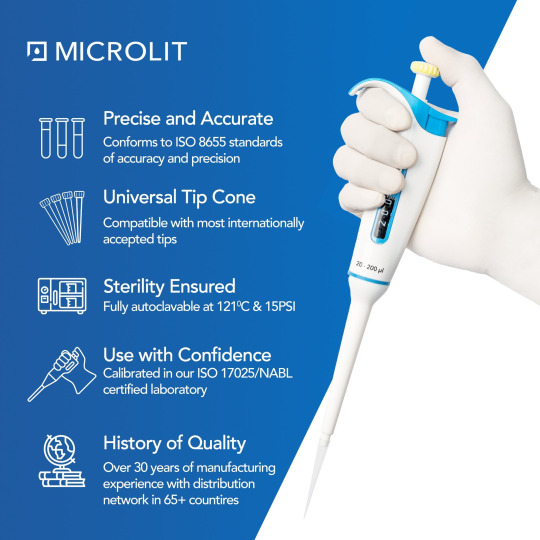
Variable Volume Micropipettes
Variable volume micropipettes are versatile tools that allow researchers to adjust the volume of liquid dispensed, making them suitable for a wide range of applications. This adjustability is particularly beneficial in experimental setups that require different volumes or in labs with varied pipetting needs. Variable volume micropipettes ensure that you can perform multiple tasks with the same pipette, reducing the need for multiple fixed volume pipettes and saving space and resources.
Microlit Micropipette
Microlit is a brand known for its high-quality, ergonomic pipettes designed to provide accurate and precise liquid measurement with reduced user fatigue. They offer both adjustable and fixed volume micropipettes, catering to the diverse needs of laboratories. Microlit micropipettes are engineered with user comfort in mind, featuring lightweight designs and easy volume adjustments. Their products are an excellent choice for labs looking for reliable, ergonomic pipetting solutions.
Fixed Volume Micropipettes
Fixed volume micropipettes are designed to dispense a specific volume of liquid. These pipettes offer simplicity and speed, as they eliminate the need to adjust the volume for each use, making them ideal for repetitive tasks requiring the same volume. Fixed volume micropipettes are known for their reliability and consistency, providing precise measurements every time. They are particularly useful in high-throughput settings where the same procedure is repeated multiple times.
Adjustable Micropipettes
Adjustable micropipettes combine the versatility of variable volume pipettes with the precision and ease of use characteristic of fixed volume models. They allow for quick adjustments of the dispensed volume, catering to a broad range of tasks within a single experiment. Adjustable micropipettes are perfect for labs that handle complex protocols requiring different volumes but still demand the precision and accuracy that fixed volume pipettes offer.
Which is Right for Your Lab?
Choosing between adjustable and fixed volume micropipettes depends on your lab's specific needs:
For Versatility and Broad Application Range: If your lab performs a wide variety of experiments that require different volumes, variable volume or adjustable micropipettes are the way to go. They offer the flexibility needed to accommodate diverse protocols.
For Repetitive Tasks and High Throughput: If you're working in an environment where speed and consistency are paramount, and the tasks involve repetitive pipetting of the same volume, fixed volume micropipettes offer the efficiency and reliability you need.
For Precision and Comfort: Brands like Microlit offer both adjustable and fixed volume micropipettes designed with ergonomic features to reduce fatigue and improve accuracy, making them a good choice regardless of the type you choose.
In conclusion, the decision between adjustable and fixed volume micropipettes should be guided by the specific requirements of your laboratory. Consider the nature of your experiments, the importance of versatility versus speed, and the ergonomic needs of your team. By carefully assessing these factors, you can select the pipetting tools that will best support your research and ensure the success of your lab's operations.
#variable volume micropipettes#microlit micropipette#fixed volume micropipettes#adjustable micropipettes
0 notes
Text
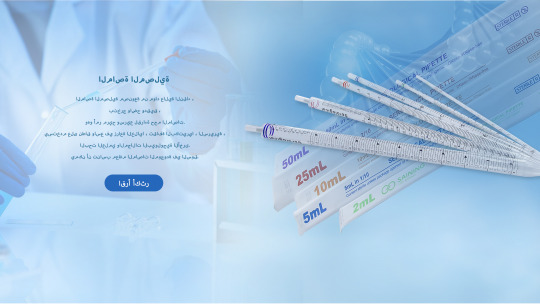
A serological pipette, also called a graduated pipette or a volumetric pipette, is a laboratory instrument used to measure and dispense precise volumes of liquid. It is similar in function to a micropipette, but typically has a larger volume range and is less precise. Serological pipettes are commonly used in medical and research laboratories, especially in serology.
A serological pipette is used for dispensing precise volumes of a fluid for serological tests, such as ELISA and agglutination assays that detects the presence of specific antibodies or antigens to diagnose infectious diseases or other medical conditions.
0 notes
Text
Understanding the Different Types of Pipettes and Their Uses
Pipettes are indispensable tools in laboratories worldwide, playing a pivotal role in experiments that demand precision and accuracy. Whether you’re working in a research lab, a clinical setup, or an industrial environment, choosing the right type of pipette is crucial for achieving reliable results. Let’s explore the various types of pipettes, their unique features, and how they cater to specific applications.
1. Air-Displacement Pipettes
Air-displacement pipettes are among the most commonly used pipettes in laboratories. These pipettes use a piston mechanism to create a vacuum that draws liquid into the disposable tip. Their accuracy makes them ideal for applications such as molecular biology and biochemistry, where small liquid volumes must be measured precisely.
2. Positive Displacement Pipettes
Positive displacement pipettes operate differently, using a piston that directly contacts the liquid. This design eliminates air gaps, making them perfect for handling viscous, volatile, or dense liquids. Researchers working with samples like DNA solutions or hazardous chemicals often prefer positive displacement pipettes for their reliability and minimal contamination risk.
3. Single-Channel Pipettes
Single-channel pipettes are designed for transferring liquid one channel at a time. They’re a staple in labs, particularly for tasks requiring precision, such as preparing serial dilutions or pipetting individual samples. Their ergonomic designs ensure ease of use during repetitive tasks.
4. Multichannel Pipettes
Multichannel pipettes streamline workflows by enabling simultaneous liquid handling across multiple wells. These pipettes are indispensable in high-throughput environments like ELISA assays and plate-based studies, saving time and reducing repetitive strain.
5. Electronic Pipettes
Electronic pipettes bring automation to manual pipetting tasks, improving precision and efficiency. They feature programmable settings and minimal manual effort, making them an excellent choice for repetitive pipetting tasks or when working with delicate samples.
6. Mechanical Pipettes
Mechanical pipettes, also known as manual pipettes, are the traditional choice for scientists. They are robust, cost-effective, and reliable, making them suitable for general lab use. Their straightforward mechanism makes them a go-to option for routine procedures.
7. Micropipettes
Micropipettes are specialized pipettes designed for handling very small liquid volumes, often in the microliter range. They are widely used in genetics, microbiology, and other fields requiring precision at a microscopic scale. Microlit’s range of micropipettes is trusted for its accuracy and ergonomic design.
8. Serological Pipettes
Serological pipettes are often used for transferring larger liquid volumes. These graduated pipettes are a staple in cell culture labs and are typically used with a pipette controller for ease of operation.
9. Pasteur Pipettes
Pasteur pipettes, also called transfer pipettes, are simple and disposable. Made of glass or plastic, they are ideal for qualitative liquid transfers and are commonly used in microbiological and histological applications.
10. Volumetric Pipettes
Volumetric pipettes are designed for delivering a single, precise volume of liquid. Their high accuracy makes them ideal for analytical chemistry applications, such as preparing standard solutions and dilutions.
Choosing the Right Pipette for Your Application
Selecting the appropriate pipette depends on the nature of the experiment, the volume of liquid to be handled, and the required precision. For instance, multichannel pipettes are essential for high-throughput tasks, while micropipettes are indispensable for molecular biology work. Evaluating your lab’s specific needs can guide you toward the best choice.
Maintaining Your Pipettes for Longevity
Proper maintenance is key to ensuring the longevity and accuracy of pipettes. Regular calibration, cleaning, and storage in appropriate conditions prevent wear and tear. Investing in high-quality pipettes, like those from Microlit, ensures durability and consistent performance.
Microlit: Innovating Liquid Handling Solutions
Microlit is a trusted name in liquid handling equipment, offering a diverse range of pipettes tailored to modern laboratory needs. With a focus on ergonomic designs, precision engineering, and customer satisfaction, Microlit’s products stand out in the market. Explore their range to find the perfect pipette for your lab.
Final Thoughts
Understanding the different types of pipettes and their uses ensures that researchers and lab technicians make informed choices, enhancing the accuracy and efficiency of their work. With advancements in pipette technology, tools like Microlit’s range of liquid handling solutions continue to push the boundaries of precision and reliability in laboratories worldwide.
#micropipette#pipettes#micropipette price#pipette filler#microlit#electronic pipettes#Mechanical pipettes#Multichannel pipettes#Single-channel pipettes#types of pipettes
0 notes
Text
Types of Laboratory Apparatus
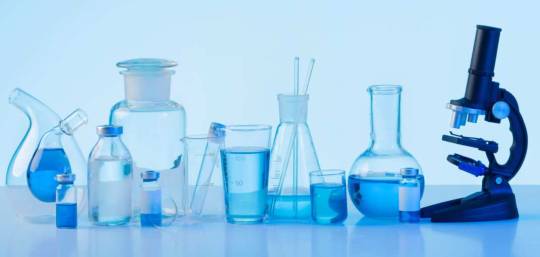
Laboratory Apparatus, In the dynamic world of scientific exploration, laboratories serve as the crucibles of innovation and discovery. Central to these hubs of knowledge are various laboratory apparatus, each designed for specific tasks to unlock the secrets of the universe. In this exploration, we will delve into the diverse types of laboratory apparatus, shedding light on their roles and significance in the pursuit of scientific understanding.
Beakers and Flasks: The Workhorses of Experimentation
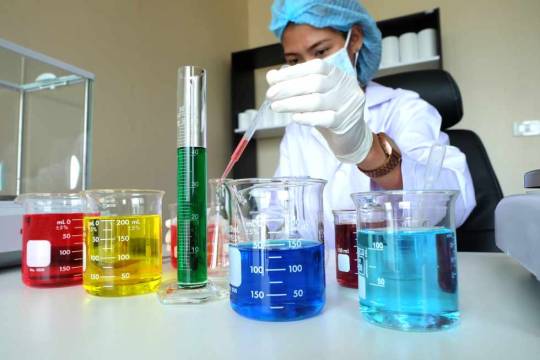
Beakers and flasks are the stalwarts of any laboratory apparatus, serving as vessels for mixing, measuring, and holding liquids. Beakers, with their cylindrical shape and wide mouth, are ideal for stirring and pouring liquids. On the other hand, flasks, often with a narrower neck, are used for reactions that involve the release of gases, ensuring controlled containment.
Test Tubes and Culture Tubes: Homes of Microcosmic Reactions
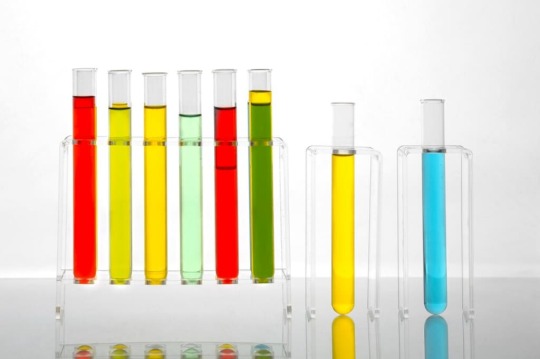
Another laboratory apparatus is test tubes, characterized by their slender and elongated shape, are iconic symbols of laboratories. They are employed for small-scale reactions, heating substances, and observing chemical changes. Culture tubes, with a similar design, are tailored for microbial and cellular cultures, facilitating the growth and study of microorganisms.
Pipettes: Precision in Volume
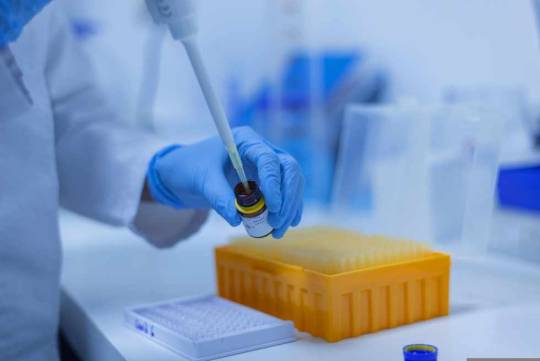
Precision in measuring and transferring small volumes of liquids is the forte of pipettes. Available in various types, including micropipettes and volumetric pipettes, these instruments ensure accuracy in experiments where even a slight deviation can lead to significant errors. Pipettes are indispensable in fields like biology, chemistry, and medical research.
Burettes: The Graduated Flow of Precision
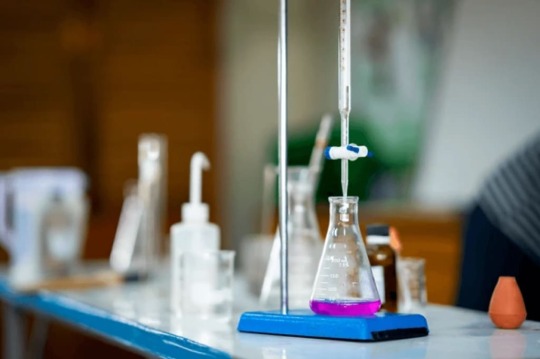
When precise measurement and control of liquids are paramount, burettes step into the limelight. These long, graduated tubes with a stopcock at the bottom allow for meticulous titrations, where the volume of a solution is precisely determined while reacting with another solution. Burettes are vital tools in analytical chemistry, ensuring accuracy in concentration calculations.
Microscopes: Unveiling the Microcosm
Microscopes open windows to the unseen world, enabling scientists to explore the microscopic realms. Light microscopes use visible light to magnify specimens, while electron microscopes employ electron beams for even higher magnification. Microscopes are foundational in fields like biology, medicine, and materials science, revolutionizing our understanding of cellular structures and tiny organisms.
Centrifuges: Separating Forces in a Spin
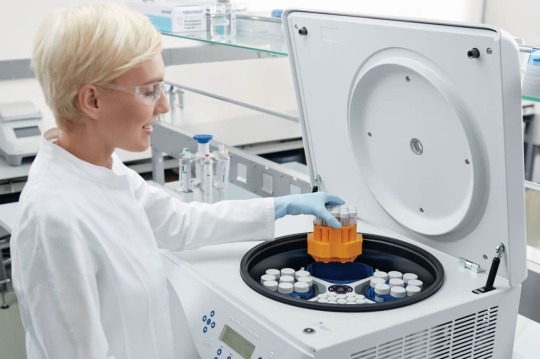
Centrifuges harness centrifugal force to separate components within a liquid sample based on their density. Commonly used for separating blood components in medical laboratories, centrifuges find applications in various scientific disciplines, including biochemistry and molecular biology. Different types of centrifuges, such as ultracentrifuges and microcentrifuges, cater to specific needs of researchers.
Incubators: Nurturing Growth in a Controlled Environment
Incubators recreate specific environmental conditions to foster the growth of cultures, cells, or microorganisms. They provide a controlled setting for experiments requiring constant temperature, humidity, and CO2 levels. Incubators play a crucial role in biological and medical research, ensuring optimal conditions for cell cultures and experiments.
Autoclaves: Sterilizing for Safety
Sterilization is a non-negotiable aspect of laboratory work, particularly in microbiology and medical research. Autoclaves, using high-pressure steam, eliminate bacteria, viruses, and other contaminants from laboratory equipment and materials. This ensures a sterile environment for experiments and prevents cross-contamination.
Spectrophotometers: Quantifying the Spectrum
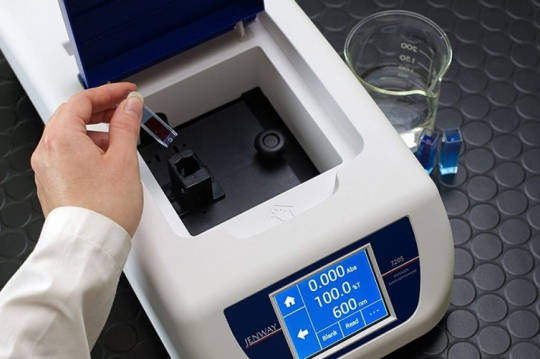
Spectrophotometers measure the intensity of light absorbed or transmitted by a sample at different wavelengths. Widely used in chemistry and biochemistry, these instruments provide valuable data about the composition and concentration of substances. Spectrophotometers play a pivotal role in quantifying DNA, proteins, and various chemical compounds.
Ovens and Furnaces: Heat for Transformation
For experiments requiring precise temperature control and heat application, ovens and furnaces step in. These apparatus are crucial for processes like drying, sterilization, and material synthesis. Furnaces, capable of reaching higher temperatures, find applications in metallurgy, ceramics, and material science.
PH Meters: Gauging Acidity and Alkalinity
The acidity or alkalinity of a solution is a fundamental parameter in many scientific investigations. pH meters provide an accurate measure of the hydrogen ion concentration in a solution, allowing researchers to monitor and control the acidity or alkalinity of their experimental environments. These instruments are indispensable in fields like chemistry, biology, and environmental science.
Chromatography Systems: Separating Mixtures with Precision
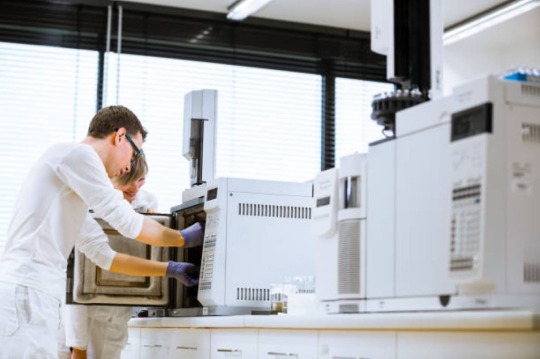
Chromatography is a versatile technique employed to separate and analyze complex mixtures. Gas chromatography, liquid chromatography, and thin-layer chromatography are among the various chromatography systems used in laboratories. These systems are vital for applications ranging from pharmaceutical analysis to environmental monitoring.
In Conclusion of type of laboratory apparatus :
The laboratory apparatus discussed here represents the diverse tools that scientists and researchers wield in their quest for knowledge and discovery. Each instrument plays a specific role, contributing to the intricate tapestry of scientific exploration. As technology continues to advance, new and innovative laboratory apparatus will undoubtedly emerge, further enriching the capabilities of laboratories worldwide. In the grand symphony of scientific inquiry, these apparatus stand as the instruments that harmonize to unveil the secrets of the natural world.
0 notes
Text
I keep getting frustrated with AutoCAD because it feels like everything happens so slowly. this is definitely in part due to my still learning how to use it, but also because I've already spent a year doing all of this in pencil. it took me 45 minutes to make an autocad title block yesterday. I could do it in 5 on trace.
it also falls in line with what I've begun to understand about my learning style, that I can learn how to use a single tool exceptionally well, but fumble severely with a toolbox. to me a pencil is a tool I can use to do a lot of things with, but autocad, despite technically being a single program, presents itself as a toolbox of atomized functions. similarly, when we learned traditional color rendering, I was initially paralyzed by all the different colors and pigment materials- after a year of practice, I have strategies for depicting specific things (eg. water flow on a conceptual plan, layers of pencil/pen/marker for individual flowers), but if you asked me to render a car I literally wouldn't even know where to begin.
Processes > Ingredients.
my first career was in molecular biology, but I got a C in my university Molecular Biology class because, even though I knew (and know) exactly how all of the processes happen, I kept (and keep) mixing up the names of the proteins.
I maintain that the reason Organic Chemistry is such a nightmare class for most people is because it simultaneously has too many processes to understand (chemical reactions and puzzles) and too many ingredients to memorize (molecules/chemical parts), meaning a student would have to be strong in both to succeed as it is currently taught.
I can make it from my house to a couple dozen different places without a map no problem, but I always use navigation apps because if there's an unexpected detour, I'll have no idea where I am. I couldn't make it unaided from one of those places to another without going home first.
If I have a specific tool to focus my attention on for extended periods of time, I can skirt my way around general impairments. I have pretty poor strength and dexterity in my hands and fingers; I can't open jars, and on bad days I struggle a lot to tie my shoes. but I can finesse a micropipette to individual microliters, and I'm typing at an impressive WPM for someone who can't always open child safe bottles.
hell, I'm pretty sure the reason I can drive and drive well, when so many autistic people can't, is because it was presented to me from an early age as a tool I could master: between those kiddie ride-on cars, driving my dad around in golf carts on vacation from age 11, and driving my parents' car up the long empty road to our house from age 13, by the time I Officially Legally started learning how to drive, I already understood how to operate a vehicle, so I could focus my energy on learning the rules of the road and on how to deal with stressful traffic situations.
this is a true ramble without a planned ending, but I wanted to mention something else: all of the above is true for me, I'm AuDHD. for my partner, who is dyslexic and allistic, the exact opposite is true. brilliant in infinite toolbox situations, but has trouble putting the pieces together in contexts outside of his core competencies.
that's all
0 notes
Text
Understanding Serological Pipettes: Types, Uses, and Benefits
Nowadays in the lab, we can’t compromise on precision and reliability. One of the key tools that helps us stay accurate when handling liquids especially in cell culture labs is the serological pipette. These handy tools play a crucial role in many areas of science, from microbiology to cell biology. This blog dives into the types, uses, and benefits of serological pipettes giving you a complete picture of this essential lab tool.
What is a Serological Pipette?
A serological pipette is a graduated, cylinder-shaped tool that has the purpose to transfer and measure liquids . Labs in research, clinics, and industry use it often. It has an essential role to ensure accuracy in tasks like cell culture reagent preparation, and sample dilution.
Serological pipettes differ from micropipettes, which are for smaller volumes. They handle liquid amounts from 1 mL to 50 mL. Their graduated markings allow exact measurements, which makes them a top choice for procedures that need precision.
Types of Serological Pipettes
Serological pipettes come in different materials, formats, and designs. Each type fits specific lab needs. Here are the main types:
1. Glass Serological Pipettes
Glass pipettes last long and you can use them many times. This makes them great for labs that want to be eco-friendly. They can handle being sterilized in an autoclave and don’t react with most chemicals. But they can break more than plastic ones.
2. Plastic Serological Pipettes
Plastic pipettes often made from polystyrene, weigh less, cost less, and you throw them away after use. They’re safer than glass pipettes cutting down on contamination risks and breakage. Plastic pipettes come clean and packaged, which saves time in busy labs.
Everyday Uses of Serological Pipettes
Serological pipettes play a key role in many lab processes. Here’s how scientists use them:
1. Cell Culture
Cell biologists rely on serological pipettes to swap out media, seed cells, and move reagents. These tools stay clean and measure so cell cultures don’t get dirty and grow well.
2. Titration
Chemists use serological pipettes to titrate. This helps them figure out how much of something is in a solution by adding liquid bit by bit.
3. Sample Dilution
Labs often reach for serological pipettes to make dilutions. This step makes sure samples are ready for tests and experiments.
4. Reagent Preparation
Preparing solutions and reagents in large quantities often needs serological pipettes to transfer precise volumes.
5. Microbial Studies
In microbiology, scientists use these pipettes to prepare liquid cultures, perform inoculations, and handle sterile liquids in other processes.
Benefits of Using Serological Pipettes
1. Precision and Accuracy
Serological pipettes deliver exact liquid volumes, which helps to maintain consistency in experiments. Their graduated markings allow scientists to transfer accurate volumes even in complex procedures.
2. Versatility
From cell culture to chemical titrations, labs can use serological pipettes for many different tasks making them a flexible tool.
3. Ease of Use
When you pair them with a pipette controller or bulb, serological pipettes make liquid handling smooth and easy. This has an impact on workflow productivity.
4. Sterility
Many plastic serological pipettes arrive pre-sterilized, which ensures operations free from contamination. This feature proves essential to analyze sensitive workflows like molecular biology or tissue culture.
5. Cost-Effectiveness
Disposable plastic pipettes are budget-friendly for labs that handle high-throughput workflows. They cut down the need to implement sterilization equipment and labor.
Tips to Use Serological Pipettes
Follow these best practices to make sure your results are accurate and to keep your experiments sound:
Pick the Best Pipette: Go for a pipette that fits the volume needs of your experiment.
Check It Often: Regular checks help keep your measurements on point.
Keep It Clean: Use clean pipettes for sensitive work, and don’t touch the tip to avoid messing things up.
Get the Right Controller: Match your pipette with a good controller to make your job easier and save your hand from strain.
Throw It Away : Get rid of used pipettes following lab rules for dangerous stuff.
Things to Think About When Picking a Serological Pipette
When you’re choosing a serological pipette for your lab, keep these things in mind:
Material: Glass to reuse and resist chemicals; plastic for ease, safety and sterility.
Volume Range: Make sure the pipette handles the amounts you often work with.
Sterility: Choose pre-sterilized pipettes for important tasks.
Compatibility: Check if the pipette works with your pipette controller.
Environmental Impact: Think about eco-friendly choices if you care about the planet.
To wrap up
When it comes to precision and reliability in liquid handling, you can’t beat the right tools. Accumax Serological Pipettes are the best choice to handle liquids and in cell culture, microbiology, and general lab work. These sterile, volumetric transfer pipettes are made to make aseptic cell culturing procedures easier keeping workflows free from contamination.
With clear bold graduations in both directions for easy reading and dispensing of volumes, and color-coded marks to identify sizes, Accumax pipettes take away any doubt in liquid handling. You can get them in different volumes and capacities matching what your lab needs.
Switch to Accumax Serological Pipettes and see top-notch precision, ease of use, and excellence. Each drop matters—pick Accumax for your lab right now!
Originally published at : https://www.accumaxlab.com/understanding-serological-pipettes-types-uses-and-benefits/
0 notes
Text
July 5th, 1996 was the day when Dolly was born. Dolly was not the name of a little girl, but rather a name given to a sheep. This day is considered an iconic event in medical science. However, there is a catch. While thousands of sheep are born every day, this sheep was not born through sexual reproduction. Rather, she was created through the process of cloning, which means making an identical copy of an individual by using a tiny cell.
After this event, it was discovered that cloning was possible, and that mammals could be cloned.
According to some conspiracy theories, scientists have already developed the method for human cloning, but only a few people who are in power know about it, and they are using this method for their own benefits. There are many conspiracy theories related to human cloning available on the internet.
but in this post you will get only facts
There are three types of cloning: gene cloning, reproductive cloning, and therapeutic cloning. Dolly, the sheep, was created through reproductive cloning. The process used to create Dolly was quite complicated, but it is important to pay attention to it.
First, a nucleus was taken from a somatic cell of a donor and transplanted into a host egg cell, which already had its genetic material removed, making it an enucleated egg. When the genetic material from the somatic cell was transferred into the host oocyte using a micropipette, an electric current was used to fuse the genetic material from the somatic cell with the egg. When the two cells fused, a new cell was created, which was then grown in a surrogate body, resulting in the creation of Dolly the sheep.
This method, known as reproductive cloning can theoretically be used for human cloning, but not practically. For example, it took scientists 277 attempts to create the first mammal clone. This means that a surrogate body had to carry the embryo 277 times. Currently, the success rate of mammal cloning is between 10% to 20%, which is better than the 0.4% success rate in 1996. However, this process is still inefficient.
Technically, it is not difficult to create a clone embryo, but when it comes to human cloning, there are many challenges that need to be considered. Even if scientists can overcome these challenges, there is still a bigger issue that is waiting for them.
The success rate for mammal cloning is between 10% to 20%, which means that there is an 80% to 90% chance that the experiment will fail. The experiment can hurt the baby, and the surrogates who carries the embryo can also be hurt. Additionally, sometimes cloned mammals expire before being implanted, there are miscarriages, and some cloned animals develop serious abnormalities.
While these risks and experiments can be carried out on animals, it becomes difficult when it comes to humans. The biggest reason why human cloning has not been attempted is that there is no need for it.
Human cloning can create a person who looks like another, similar to twins who look alike, but they may not necessarily have the same qualities. However, human organs can be cloned through the process of therapeutic cloning, which is the type of cloning that creates embryonic stem cells. This process is similar to reproductive cloning, but embryos are stored rather than implanted in a surrogate body.
In summary, while theoretically human cloning is possible, practically there are many challenges that need to be overcome. Furthermore, human cloning is not necessary as organs can be cloned through therapeutic cloning.

#human cloning#Cloning explained#clone#dolly the sheep#cloned humans#human can clone#abhishek torgal
5 notes
·
View notes